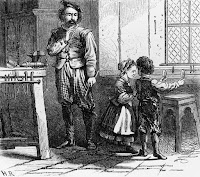Electrocardiograph (1903)
Einthoven's machine provides a major boost to diagnosing heart problems.
Einthoven's galvanometer, which he produced in 1903, consisted of a microscopic thread of quartz known as a "string" that was vertically suspended in a strong magnetic field. When minute currents passed through the string it deflected and obstructed a beam of light, allowing the shadow to be recorded on photographic paper.
Early prototypes were unwieldy-weighing 600 pounds (272 kg), they needed to be operated by five technicians and required patients to place both hands and feet in buckets of cold water. The instrument was, impulses as the heart contracted and relaxed. Einthoven studied both normal and abnormal electrocardiograms to give doctors reference points for interpreting the results. By the 1920s heart attacks could be diagnosed from characteristic abnormal patterns. Portable, lighter EKGs eventually came along and after world war ii the string galvanometer was superseded by direct writing equipment.
The electrocardiograph-also known as EKG or ECG - is an instrument designed to record minute electric currents generated within the heart, which are used to diagnose different types of heart disease. At the end of the nineteenth century, physiologists understood that beating hearts produced electrical currents, but they could only measure them by placing electrodes directly on the heart muscle.
Dutch physician and physiologist Willem Einthoven (1860-1927) adapted the string galvanometer for use in cardiology.
String galvanometers had first been used to amplify electrical signals transmitted along with undersea cables.


Einthoven's galvanometer, which he produced in 1903, consisted of a microscopic thread of quartz known as a "string" that was vertically suspended in a strong magnetic field. When minute currents passed through the string it deflected and obstructed a beam of light, allowing the shadow to be recorded on photographic paper.
Early prototypes were unwieldy-weighing 600 pounds (272 kg), they needed to be operated by five technicians and required patients to place both hands and feet in buckets of cold water. The instrument was, impulses as the heart contracted and relaxed. Einthoven studied both normal and abnormal electrocardiograms to give doctors reference points for interpreting the results. By the 1920s heart attacks could be diagnosed from characteristic abnormal patterns. Portable, lighter EKGs eventually came along and after world war ii the string galvanometer was superseded by direct writing equipment.
- The table-model of Einthoven's electrocardiograph was made by Cambridge Scientific Instruments in 1911.

















































